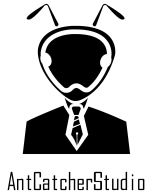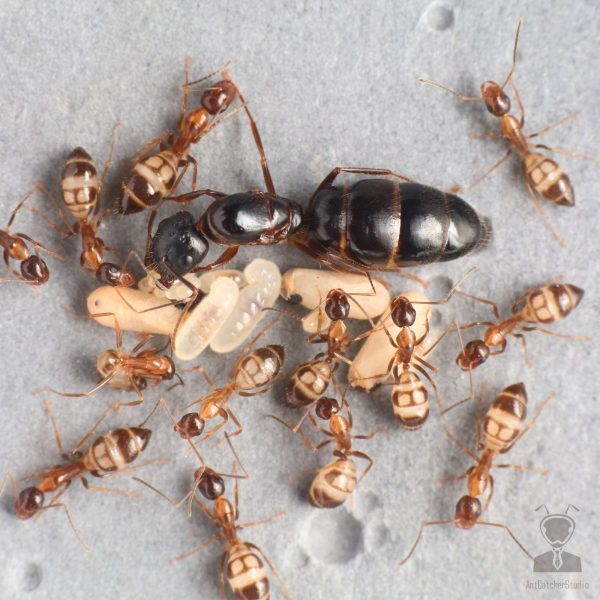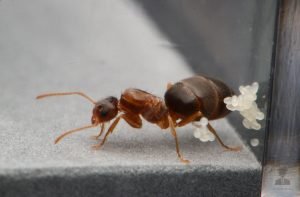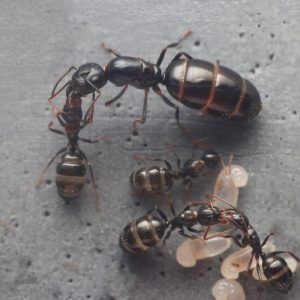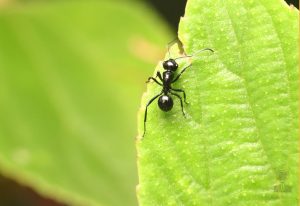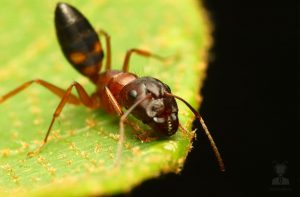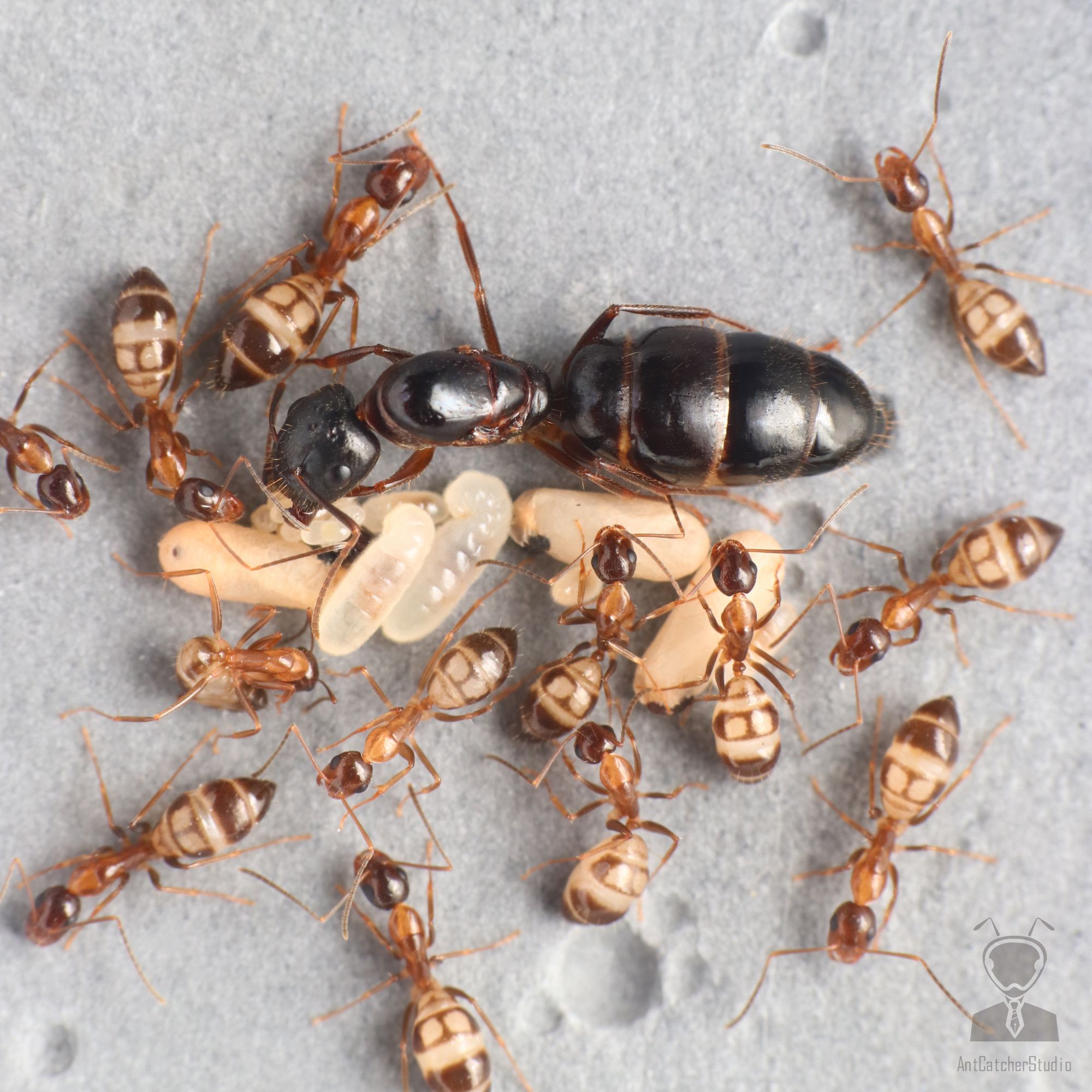
文章目錄
簡介
白疏巨山蟻是一種常見的螞蟻,代表性特色是腹部有兩個白色圓點,體型稍小,成長速度極快,非常容易飼養。
蟻種資訊
白疏巨山蟻學名:Camponotus albosparsus |
|||
|---|---|---|---|
|
工蟻頭部呈現深褐色;腹部有兩個白色圓形斑點,具大型工蟻階級,使用大顎和噴灑蟻酸做為主要武器,屬中等體型巨山蟻。
白疏巨山蟻為單后制的螞蟻,成熟群落由1隻蟻后及約2,000~10,000隻職蟻組成。白疏巨山蟻屬雜食偏素食性的螞蟻,在野外以植物花蜜、蜜腺分泌或小型昆蟲為食,廣泛分布於全台,土棲型螞蟻,常築巢於土壤、潮濕的腐木中,夜行性螞蟻,較常見。
飼養非常容易,以飼料為主食,使用石膏蟻巢、加氣磚、試管飼養。室溫環境下給予水塔即可,喜好較濕的蟻巢環境。白疏巨山蟻在小群落移進石膏蟻巢居住後會極大幅度地增加生產速度,蟻口眾多、食量大增,常常可見許多巢室都被堆放了大量的幼蟲及繭,雖體型不大,但其生產速度成為最適合初學者接觸飼養的螞蟻之一。
|
|||
飼養資訊 |
|||
飼養容易度 |
非常容易 | ||
溫濕度控制 |
不超過33度,溫濕度容忍範圍廣,喜好較濕的環境 | ||
生產速度 |
極為快速 |
個性 |
敏感膽小 |
生物學資訊 |
|||
制度 |
單后制 |
食性 |
雜食偏素食性 |
巢型 |
土棲 |
特有種 |
否 |
體長 |
蟻后 |
約9〜10mm | |
兵蟻 |
約5〜8mm | ||
工蟻 |
約3.5〜5mm | ||
購買連結
清晰照片
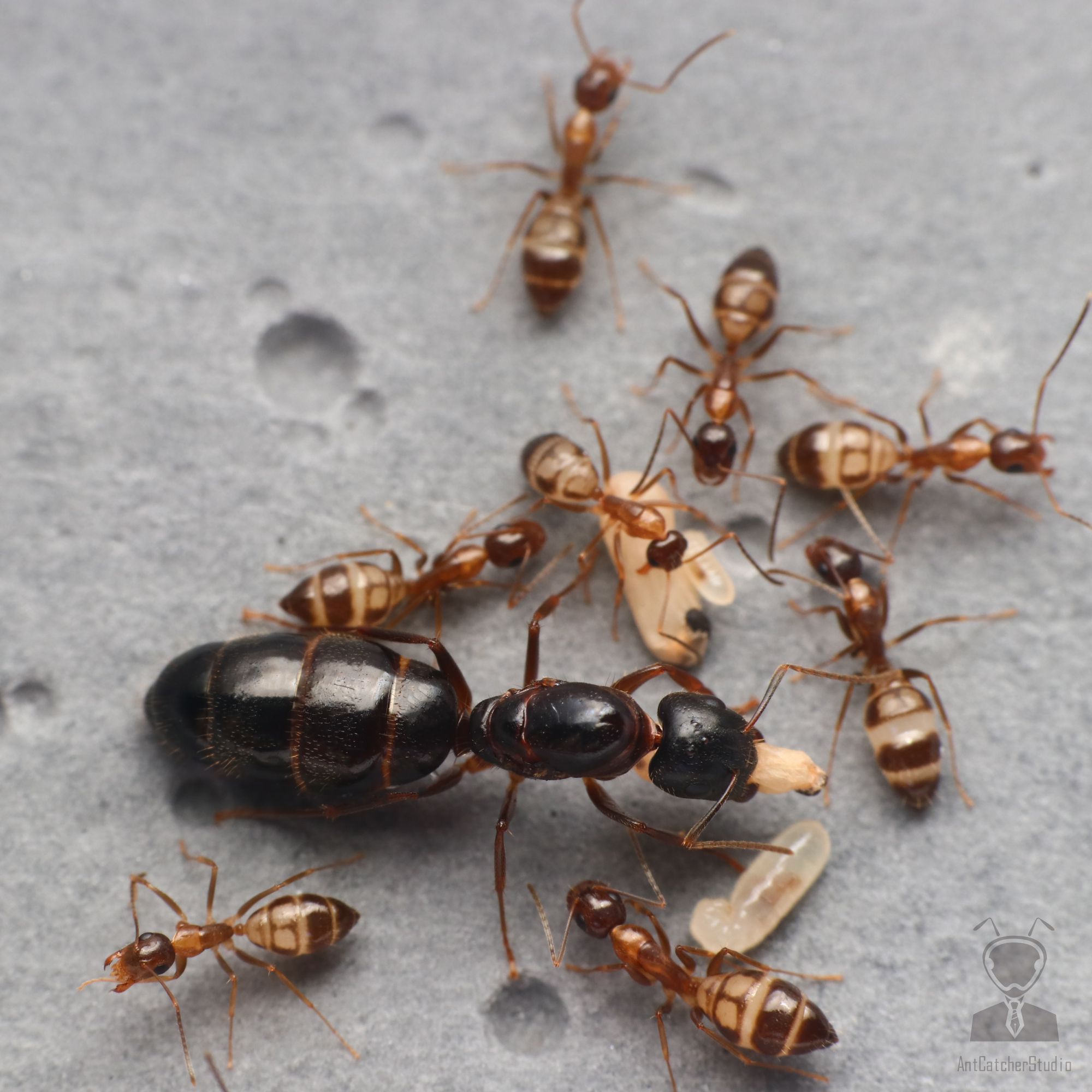
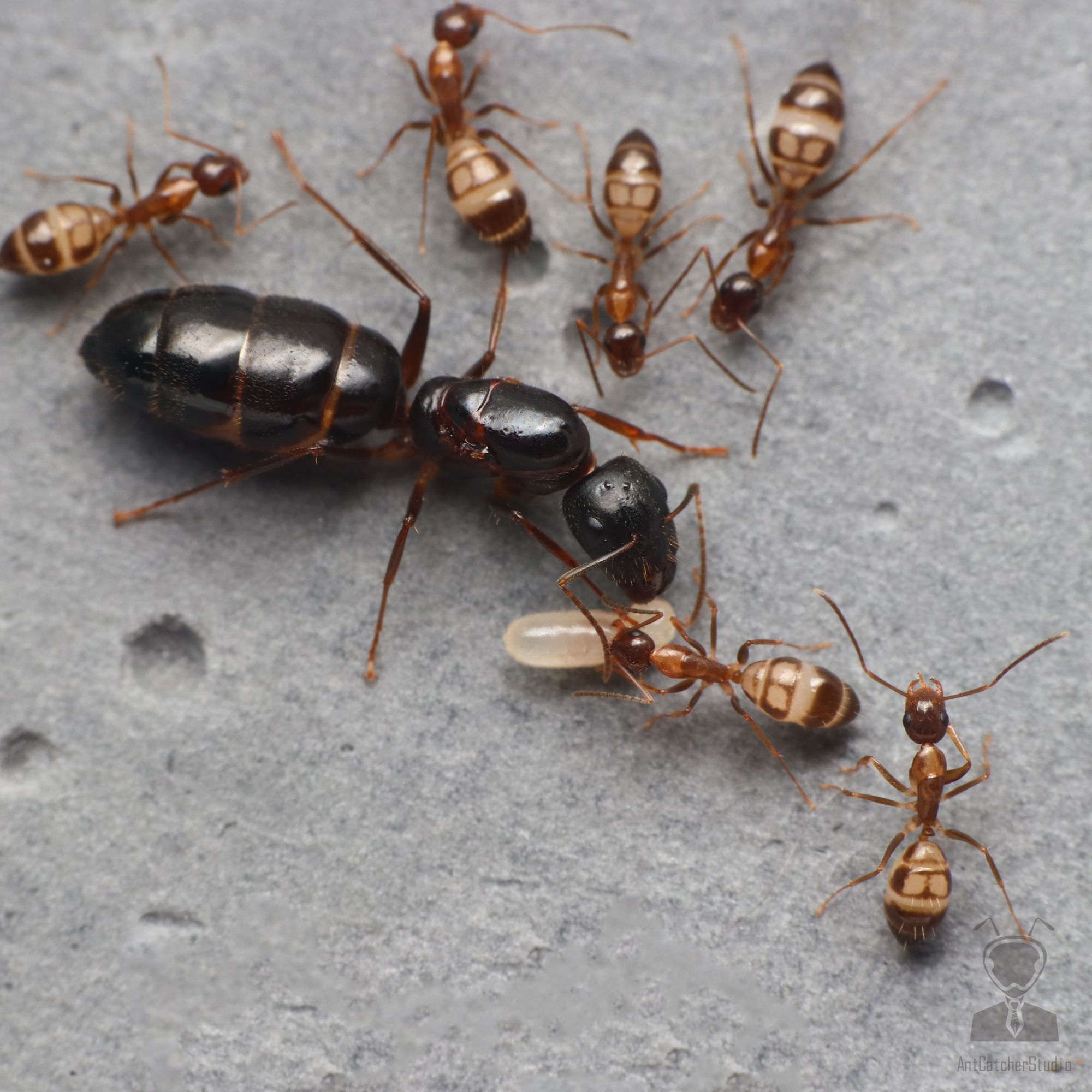
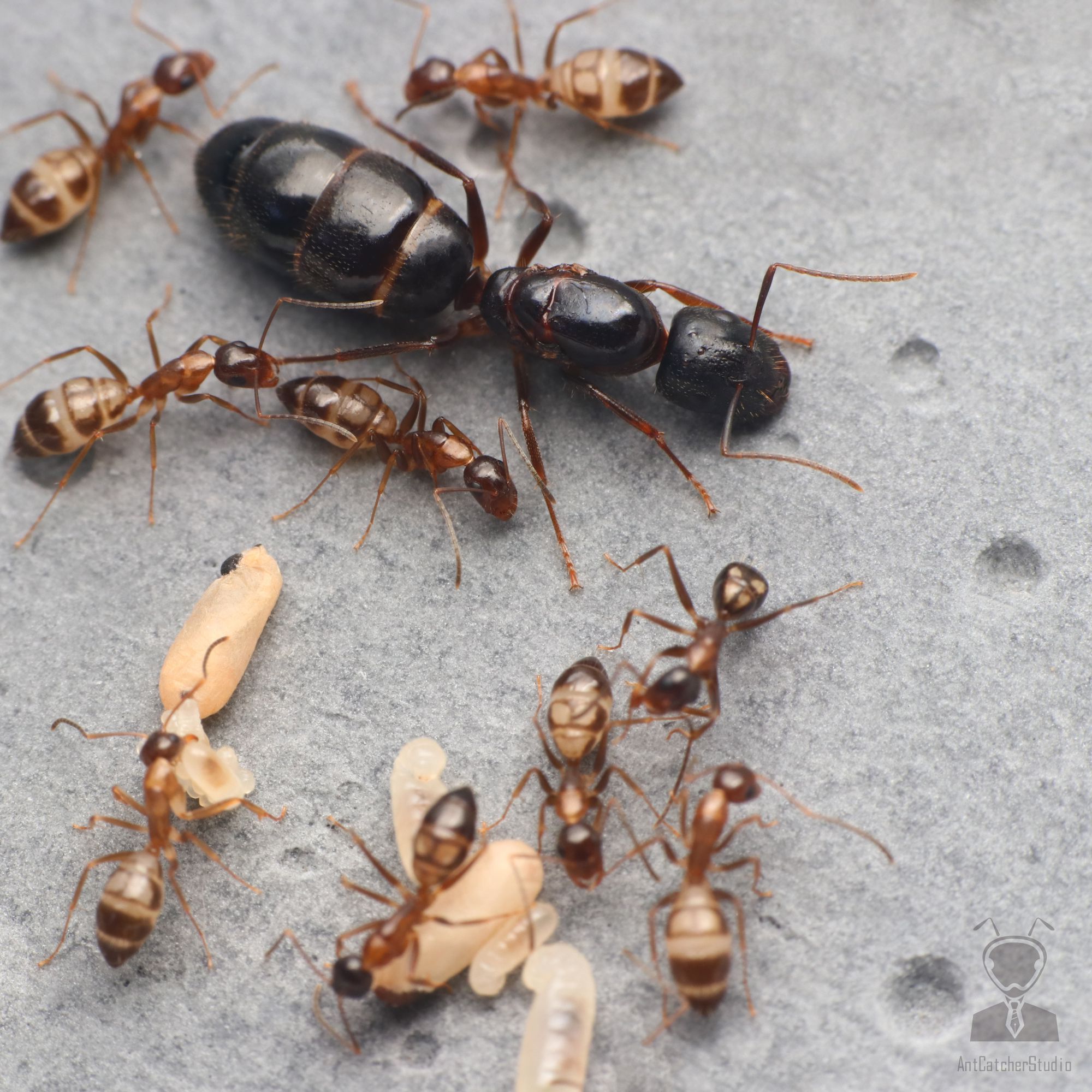
※擇后:指螞蟻在複數蟻后共同建立巢穴的過程中,體質較虛弱的蟻后將會被肢解並被分食,此行為不限於蟻后對蟻后,也常發生於工蟻擇后,意即工蟻會自行判斷並汰除較弱的蟻后
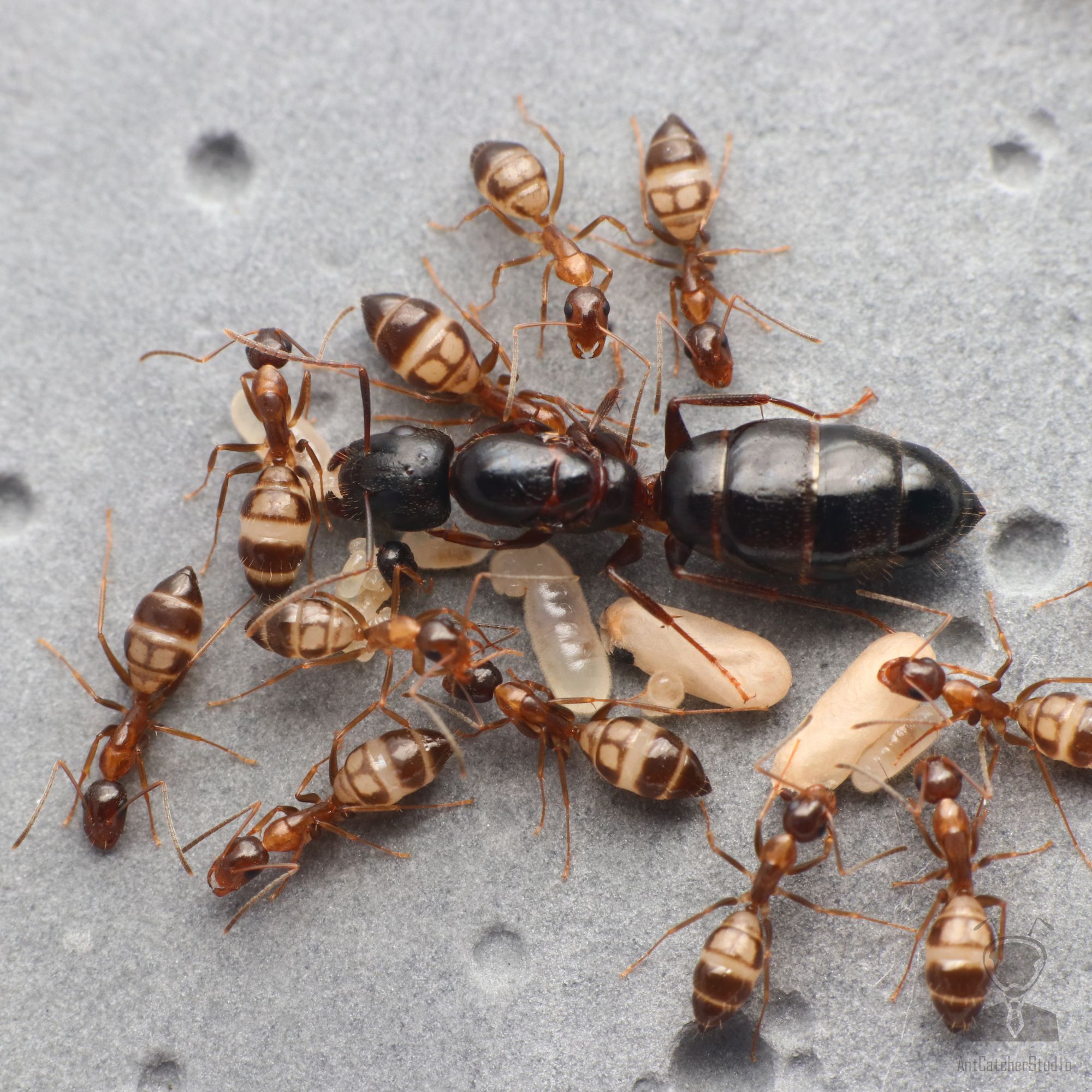
詳細飼養方式
如何飼養白疏巨山蟻?以飼料為主食,使用石膏蟻巢、加氣磚、試管飼養。於室溫環境下給予水塔即可,非常容易飼養。這個章節將會說明白疏巨山蟻,在新后到成熟群落的各階段,該如何飼養,以及該注意的地方。
花費至少 365 days
新后,尚未有工蟻
使用堵水試管培養,溫度維持25~30度,放置黑暗環境,靜待約一個月,蟻后會開始產卵並孵育。期間不餵食也可成功出工,但建議維持每週餵一次的頻率,如此一來,卵、幼蟲、繭的數量會明顯增加,並且可幫助虛弱蟻后補充能量。
新后,出1~20隻工蟻
首批工蟻出生後,開始增加餵食頻率,依照群落發展狀況調整,從1週1次~1週3次皆可,儘量不要讓蟻后產卵頻率中斷,餵食份量適量,切勿給太多,以免食物發臭,此階段不建議餵食活體。
小群落,20~100隻工蟻
隨著人口增加,試管空間逐漸不足,此階段可提供石膏蟻巢、加氣磚蟻巢、或是新增1根堵水試管供群落居住,搬家過程務必使用引導方式,不可暴力倒出,以免蟻群受驚嚇,導致蟻后停產。依照取食狀況調整餵食頻率,從1週1次~1週3次,可開始給予活體食物(非必要),活體務必燙熟或是弄殘,螞蟻有將食物搬回巢穴的習慣,因此活體建議越少越好,以免螞蟻吃不完,導致蟻巢嚴重發霉。
中小群落,100~1000隻工蟻
視狀況為群落提供更大的蟻巢,人口增加,蟻群食量也增加,因此也要增加餵食頻率,依照取食狀況,一週餵食2次~4次。
成熟群落,1000隻工蟻以上
白疏巨山蟻成熟群落,工蟻數量上限約在5000~10000隻左右,此階段將開始產出雄蟻、處女蟻后等階級,依照取食狀況,每週餵食5~7次。
常見疑問
白疏巨山蟻好養嗎?
白疏巨山蟻可以說是最好養的巨山蟻,非常容易飼養。
白疏巨山蟻去哪裡抓?
全台灣都有分布,婚飛季捕捉新后即可。
白疏巨山蟻婚飛時間?
每年6~10月是婚飛季,晚上6點~12點可在城市邊緣、郊區、山區有光源處發現蟻后(有機率)
其他山蟻亞科蟻種
尼蘭德山蟻 Nylanderia sp.2
你覺得這篇文章如何? 點擊評分...閱讀更多
瑕疵巨山蟻 Camponotus vitiosus (前 東京巨山蟻)
你覺得這篇文章如何? 點擊評分...閱讀更多
長痕棘山蟻 Polyrhachis rastellata
你覺得這篇文章如何? 點擊評分...閱讀更多
小巨山蟻 Camponotus sp.1 ( 俗稱 四斑小巨山蟻 )
你覺得這篇文章如何? 點擊評分...閱讀更多
本站竭盡所能檢驗資料正確性,但仍可能有部分內容錯誤或未及時更新,還請您海涵,也歡迎來信指正錯誤之處。
本公司具有本站所有原創文字、原創圖片之完全版權及著作權,本站原創內容採 CC BY-NC-ND 3.0 ( 姓名標示 – 非商業性 – 禁止改作 )方式授權您使用,但尤其嚴禁轉載、編輯至百科類網站 (包括但不限於維基百科 ) 。
針對侵權行為本公司將直接對行為人要求索賠。第三方單獨授權本站使用之文字、圖片,本公司亦有維護原作者權益的責任。
本站除原創內容外還有部分內容來自開放版權內容和對已公開發表的文獻的利用與整理,所引用之相關圖片、文字將會進行標註說明。
